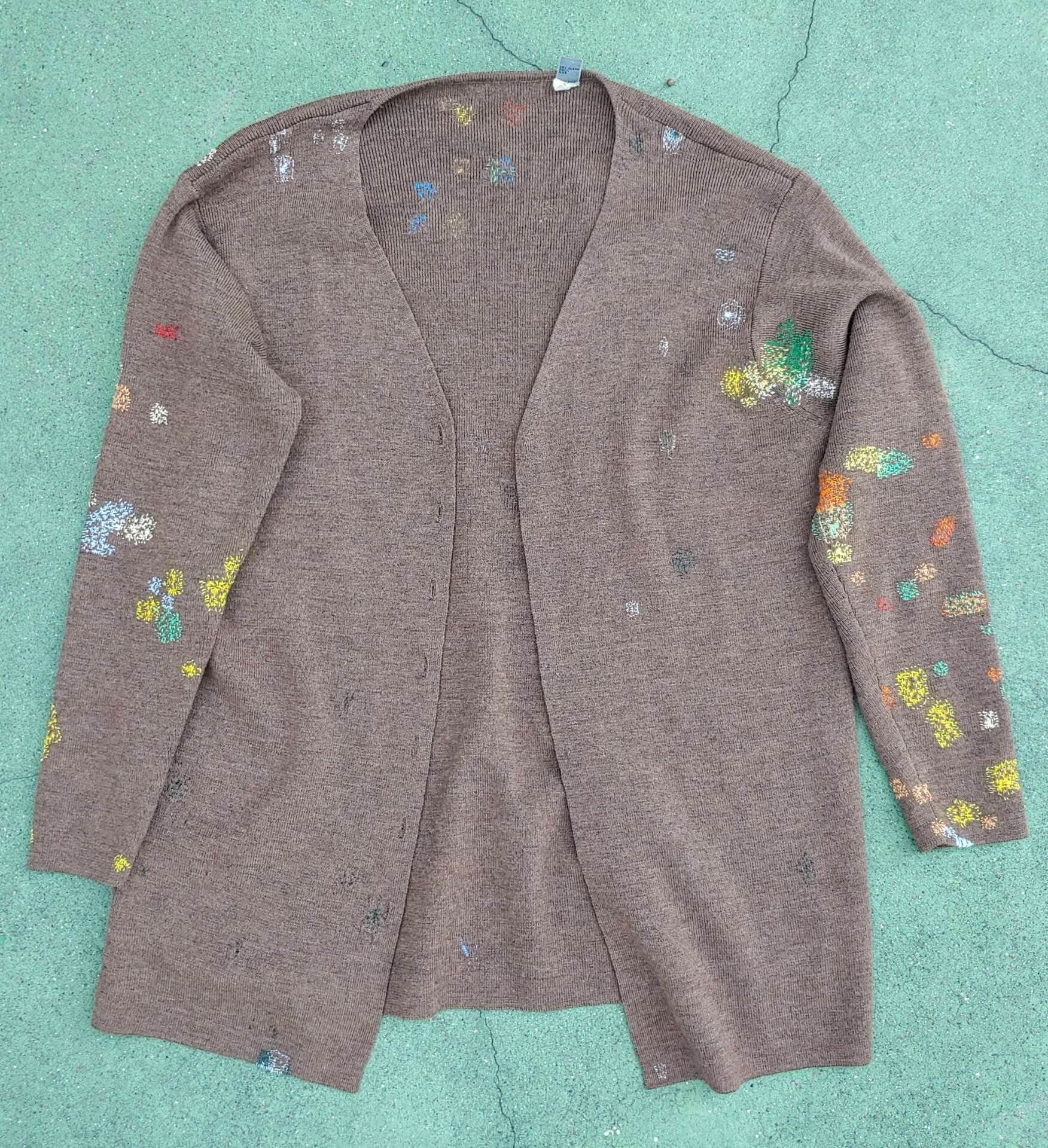Alright – so today we’ve got the honor of introducing you to Benjamin Sorrell. We think you’ll enjoy our conversation, we’ve shared it below.
Benjamin , thanks for taking the time to share your stories with us today How did you learn to do what you do? Knowing what you know now, what could you have done to speed up your learning process? What skills do you think were most essential? What obstacles stood in the way of learning more?
I’d like to talk about my most recent ventures, quilting and clothes-making. This is part of my general experience with contemporary craft, and something I didn’t go into completely without expectation, but I fell into it quickly. This journey is pretty recent- I only started trying this in 2021. I have been sewing for a while, mostly mending clothing and hand embroidering, but I became enamored with the modern art quilts and historical textile reuse techniques I would see in quilting bees, documentaries and social media. I’ve learned to love quilting, piecing and sewing with a sewing machine now. If i could tell my younger self something in this specific area, I’m not sure what it would be. On the one hand, I’d tell him to listen more readily for all the artists and people in my life making beautiful things out of old and discarded materials, to adopt that route more readily and sooner. However, knowing my own life and experiences, I think I have learned all my lessons in the times I needed them, and no sooner.
I’ve learned to make clothes and quilt in these post-pandemic times the same ways that I originally learned to sew at all- mostly listening and watching others, mostly online. My school didn’t really have a fibers program, so I was practicing my hand stitching and mending on my clothes years before I learned proper embroidery, or using sewing machines, or even how to use a thimble the proper way. My journey learning quilting has been similar- but with some lessons learned, so I ask questions more often, I listen more, and I get to choose my materials this time, unlike mending clothes where I need to deal with what I have. In terms of obstacles, I don’t think there are any meaningful ones at the moment. Maybe for the more grand ideas I occasionally have- Ideas that would require assistants, larger studio spaces, and maybe a fancier sewing machine. However, I find so much variety and depth in a small pile of scrap fabrics and a single needle and thread.



As always, we appreciate you sharing your insights and we’ve got a few more questions for you, but before we get to all of that can you take a minute to introduce yourself and give our readers some of your back background and context?
Hello, my name is Benjamin Sorrell (like the plant, but with an extra L), and I’m a printmaker and textile artist who loves working with fabric and using discarded materials. I make paper and fabric relief prints, I mend clothing, sew clothing, embroider, quilt, customize, naturally dye and generally construct new things out of old things in order to honor the materials of the earth. For the time being, I’m a one man show, precariously taking care of all the aspects and frustrations of art and business. People tend to look for me to mend and extend the life of their favorite clothes and fabric materials, or to create woodblock images for their practices, businesses and events. In the meantime, I am constantly practicing my quilt making and exploring my understanding of color and form using fabric as my main media of choice.
: Is there a particular goal or mission driving your creative journey?
At the moment, I would like my textile work to honor and represent the concept of care, holding memories, feeling the ghost images and sounds of other people you may or may not have known across space and time. Care for the earth, using and holding materials out of landfills and oceans, Care for other people, by practicing the love and presence for other people and their loved things. If i may paraphrase something I once said in an artist Q and A, repair is a magic act of transformation. Just like bodies, many objects disintegrate with time and use, but rely on us, the living beings, to repair them and make them whole again. The earth will repurpose us someday, so we are in a way beholden to our things and to each other to be caretakers.



Is there something you think non-creatives will struggle to understand about your journey as a creative?
I want to push against this question a bit, only to say that I think many, or most people have creative desires and creative practices in many forms, even if they would be considered “hobbies” or something more fleeting, and I think that when someone seems totally incurious, there’s a reason why they haven’t found the desire to create things, or they haven’t found the language that suits them yet. Other than that, if there’s something that some people genuinely might not understand, it could be that these processes I perform, and the art I make with them, are not optional. making things isn’t something I would pivot away from, or “rebrand”, or completely stop for any real length of time. In some of the worst days of my life, I found something to draw out, or write some scattering of words down to dwell on further. making things is how I generate the medium between my thoughts and the world, like a language, and being able to converse in that language with others is life-affirming.
Contact Info:
- Website: bensorrellart.weebly.com
- Instagram: https://www.instagram.com/printsandmends/
- Facebook: https://www.facebook.com/bensorrellart


